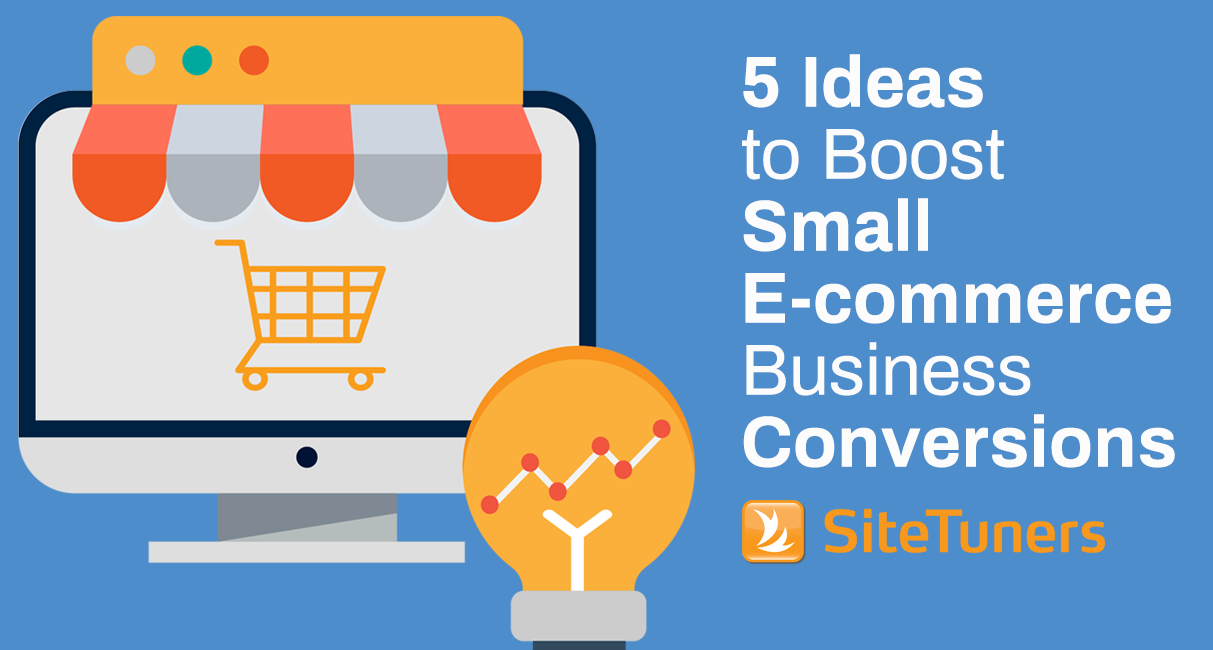
“If you build it, they will come.” Not.
This is often true for small e-commerce businesses. Alex Harris of alexdesigns.com observes that small business owners put up a web site and assume that people will come and start spending money.
In an episode of Landing Page Optimization, Alex and SiteTuners CEO Tim Ash discuss overcoming challenges faced by small e-commerce sites to ultimately improve conversions.
1. Make the Theme Work for Your Visitors
Out of the box, generic themes from hosted solutions (e.g. WordPress, Shopify, BigCommerce) aren’t necessarily optimized for conversions.
Sure, you can purchase better themes or hire somebody to create a custom theme. But you’re still limited with what you can add within the home page, category pages, product pages, and the shopping cart.
Alex notes, however, that within each system, you can ‘hack it’ so you can add things like trust and credibility seals. You can do customizations specific to your target audience to make them comfortable purchasing from you.
You can get someone fluent in the technology to do custom programming and add features that will help with conversions, or delete items that are detrimental to user experience.
2. Improve Your Home Page
The home page needs to get people to the next step as quickly as possible.
Make sure your home page has what Bryan Eisenberg calls the “conversion trinity.” Above the fold, visitors should be able to immediately tell …
- Who you are
- What your value proposition is
- What the call-to-action (CTA) is
Alex adds that it’s important that …
- Your CTA gives away something of value.
- You show your phone number- this helps with building credibility.
- You have trust seals that visitors can recognize (e.g. money-back guarantee).
3. Remove Anxiety at Checkout
There are several ways you can alleviate customer anxiety at the point of sale:
- Add a header and footer on your shopping cart and checkout page. The header of the shopping cart should say “Shopping Cart 100% Secure.” Change that to “Checkout 100% Secure” on the checkout page. Then, put the lock symbol next to those titles.
- Add trust seals like that of the Better Business Bureau (BBB).
- Avoid surprises. Make sure that the checkout page follows web site conventions.
- Avoid marketing lingo. Ensure that instructions are clear, so visitors know exactly what to do.
Another way to alleviate customer anxiety, Tim adds, is by putting tiny text beside the CTA to indicate that an action is reversible – similar to how Amazon says ‘You can always change this later’ in the checkout process.
4. Optimize Your Highest Traffic Pages First
The vast majority of e-commerce sites follow these rules:
- 80% of your revenue comes from 20% of your inventory
- 80% of your traffic goes to 20% of your pages
Chances are, those high-traffic pages are category pages or product pages, not your home page.
Say your CTAs for each of the product is below the fold for your key category.
- You can test moving the CTAs above the fold so they’re easier to click and that will give you a conversion lift.
- Test that one page as much as you can until you reach a local maximum.
- Then, once you know what’s working perfectly in that scenario (i.e. the composition of that category page), duplicate it to all of your category pages.
You want to make sure that your category pages are performing, and that starts with split tests on the high traffic areas.
If you have limited traffic, you can focus on micro-conversions rather than bottom-of-the-funnel actions. Test more frequent things higher up on the funnel.
You can look at the bounce rate, for instance. The goal could be lowering your bounce rate and getting visitors to click through deeper into the site (since that’s a prerequisite for visitors putting an item in the cart or buying it).
Of course, if you don’t have enough traffic to test, you want to at least make sure that you use best practices.
5. Focus on the ‘Why’ of Conversions
There is now a plethora of tools that make conversion rate optimization more efficient.
What the tools don’t do, however, is understand human behavior. The technology can tell you where people are going on your site, but it can’t tell you why visitors do what they do.
You still need to interpret the data in order in order to produce results.
You can glean the some of the ‘why’ from voice of customer (VoC). But you still have to piece together intent by putting yourself in the customer’s shoes. Something happens in their mind for them to go on Google, type in some query, and get to a landing page. They are trying to solve a problem.
Qualitative tools like Qualaroo and Survey Monkey help get you the VoC you need to start to analyze intent, but you still need to figure out what they want, and focus more on the user task and less on the technology.
Putting It All Together
If you understand the limitations of the platform you’re using, and make sure the home page describes who you are and has clear actions for the users to take, you’ll be more effective.
If you alleviate anxiety at the checkout pages, optimize your key pages first, and focus on the reasons behind the conversions, you’ll get a lot more done.




